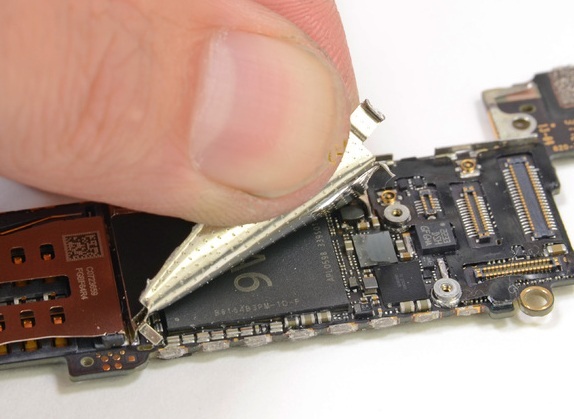The iPhone 5 went on sale in Australia long before September 21, 2012 hit in North America. So it’s finally out there. Meanwhile, the folks at iFixit.com, who operate out of San Luis Obispo in the bay area CA., headed out to Melbourne, Australia, got in line to get their hands on one, and then became the first in line to provide the first full and detailed teardown of the iPhone 5. It turns out that it isn’t all that difficult to do, although reassembly may end up a more challenging task.
And iFixit provided some good news – the iPhone 5, despite its new lean and lightweight design, has some advantages in its construction in terms of ease of repair. They give the iPhone 5 a rating of seven out of 10 (10 being easiest to repair), and it turns out that screen repair will be a simple enough thing to handle, apparently easier than it has been with the iPhone 4 and 4S. The downside though is that it likely will be a pricey fix from a parts perspective. We can live with that, and though we’ve never been in need of a repair ourselves we know lots of dark stories about cracked glass and screens.

iFixit did find that Apple has opted to use a great amount of screws and brackets to ensure that all parts are securely held in place. Build quality is clearly an issue not only in external appearance but internally as well.
The iPhone of course has a battery that is not changeable by users. This should not be an issue though. Apple has spent a lot of time optimizing power management in the iPhone 5, and this includes as well ensuring that the LTE components (the iPhone 5 uses a Qualcomm LTE radio) do not drain battery life – something that most LTE-enabled phones struggle with.

According to iFixit, Apple has changed its battery technology to a different battery chemistry that delivers a higher voltage and slightly larger capacity than the iPhone 4S. The battery appears to be a Sony-manufactured product. The following shows how the new battery stacks up with the iPhone 4S and with Samsung’s Galaxy S III (details courtesy of iFixit):
- iPhone 5 Battery: 3.8V - 5.45Wh - 1440mAh. Talk time: Up to eight hours on 3G. Standby time: Up to 225 hours.
- iPhone 4S Battery: 3.7V - 5.3Wh - 1432mAh. Talk time: Up to eight hours on 3G. Standby time: Up to 200 hours.
- Samsung Galaxy S III Battery: 3.8V - 7.98Wh - 2100mAh. Talk time: Up to 11 hours 40 minutes on 3G. Standby time: Up to 790 hours.
Walter Mossberg over at the Wall Street Journal and other reviewers have noted that the iPhone 5 provides a full day of battery power. In fact, Mossberg noted a very slight yet measurable advantage for the iPhone 5 over the 4S. Although Samsung claims up to 790 hours of standby time for the Galaxy S III – that number doesn’t really mean anything. We have never had our own Galaxy S III test phone survive beyond several days of non-use before needing to charge it up.
Once the main circuit board is removed (again, it doesn’t end up being difficult to do), most of the main components are uncovered. This includes of course the new A6 processor. The A6 is the first Apple System-on-Chip to use a custom design.

The most interesting thing about it (aside from its 2x faster processor speed and reduced power consumption over the A5 used in the iPhone 4S) is that the chip is manufactured for Apple by Samsung. Samsung is serving as a foundry here, and not as a semiconductor supplier. This dynamic between the two companies – of both being partners at one level and intense combatants on the patent infringement end - is certainly becoming more strained on a daily basis.
Also notable is that Apple did not use a single touchscreen controller in the iPhone 5. Rather, Apple has instead decided to use a multi-chip solution to handle the larger screen size. The multi-chip approach is how Apple handles the iPad touchscreen.
Here is the iPhone 5 in its entire tear-down glory:

For a far more in-depth view of the entire process, including detailed views of every critical piece of the iPhone, make sure to check out the tear down details at the iFixit website itself.
Want to learn more about today’s powerful mobile Internet ecosystem? Don't miss the Mobility Tech Conference & Expo, collocated with ITEXPO West 2012 taking place Oct. 2-5 2012, in Austin, TX. Stay in touch with everything happening at Mobility Tech Conference & Expo. Follow us on Twitter.
Edited by
Brooke Neuman
 QUICK LINKS
QUICK LINKS